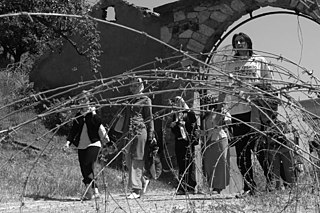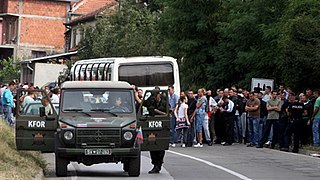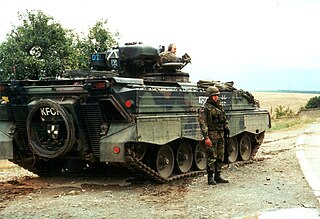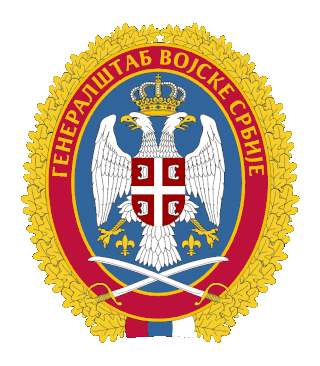Stationing and locations
Since the disbandment of Camp Casablanca in Suva Reka that was jointly run with the Austrians, SWISSCOY locations are distributed throughout Kosovo. Depending on their function, SWISSCOY members are stationed at five different locations. The NCC (National Contingent Commander) staff, the military police, the EOD team, the SWIC (Swiss Intelligence Cell) as well as sections of the signal and the medical teams are stationed at KFOR headquarters in Pristina (camp Film City). Together with Austrian KFOR staff the Swiss medics, consisting of several nurses and a doctor, are in charge of the joint medical centre (first port of call for medical patients, comparable with the well equipped surgery of a Swiss general practitioner) in the Swiss compound of headquarters. The National Support Element (NSE), the transport platoon, the engineer platoon as well as sections of the signal and the medical teams who serve in the mission hospital are stationed at the field camp in Prizren. JRD-N receives its assignments from camp Novo Selo, south of Mitrovica. The Swiss air transport detachment is stationed at camp Bondsteel in the south-east of Kosovo. Two Swiss LMTs are located in the south and live in private houses in Malishevo and Prizren. Two further LMTs are stationed in the north of Kosovo in camp Novo Selo, south of Mitrovica and operate in various allocated areas of responsibility. In the summer of 2014, the field house was opened in Mitrovica. Since then, the LMT of Mitrovica is living and working in the midst of the local population.

The Italian Armed Forces encompass the Italian Army, the Italian Navy and the Italian Air Force. A fourth branch of the armed forces, known as the Carabinieri, take on the role as the nation's military police and are also involved in missions and operations abroad as a combat force. Despite not being a branch of the armed forces, the Guardia di Finanza is organized along military lines. These five forces comprise a total of 340,885 men and women with the official status of active military personnel, of which 167,057 are in the Army, Navy and Air Force. The President of the Italian Republic heads the armed forces as the President of the High Council of Defence established by article 87 of the Constitution of Italy. According to article 78, the Parliament has the authority to declare a state of war and vest the powers to lead the war in the Government.

The Army of the Republic of North Macedonia is the military of North Macedonia. The army is organized, prepared and trained to conduct armed struggle and combat and other actions to achieve its constitutional function of defending the independence and territorial integrity of North Macedonia. The army consists of the ground forces and the air force, which are further divided into branches and services. Being landlocked, it didn't have a navy. The army has a permanent composition and reserve forces. Since 2005, it is a fully professional defense force compatible with NATO standards. On 27 March 2020, North Macedonia joined NATO as the 30th member.

The Albanian Armed Forces are the military of Albania and were formed after the declaration of independence in 1912. Today, it consists of the General Staff, the Albanian Land Force, Albanian Air Force and the Albanian Naval Force.

The Kosovo Force (KFOR) is a NATO-led international peacekeeping force in Kosovo. Its operations are gradually reducing until Kosovo's Security Force, established in 2009, becomes self-sufficient.

On 17–18 March 2004, violence erupted in Kosovo, leaving hundreds wounded and at least 14 people dead. The unrest was precipitated by unsubstantiated reports in the Kosovo Albanian media which claimed that three Kosovo Albanian boys had drowned after being chased into the Ibar River by a group of Kosovo Serbs. UN peacekeepers and NATO troops scrambled to contain a gun battle between Serbs and Albanians in the partitioned town of Mitrovica, Kosovo before the violence spread to other parts of Kosovo. Serbs call the event the March Pogrom, while the Albanians call it the March Unrest.

The DURO is a series of wheeled, multi-purpose military transport vehicles produced by General Dynamics European Land Systems/MOWAG in both four and six wheel drive. It was initially developed for Switzerland by Bucher-Guyer AG in Niederweningen, Switzerland. An initial 3000 vehicles order for the Swiss Armed Forces came through in 1994. In January 2003 the production was transferred to MOWAG in Kreuzlingen. Over 4,000 DURO 4x4 and 6x6 vehicles are now in service worldwide. The main customers are Switzerland, Germany, Venezuela, and the UK. In addition to these, the vehicle is used in many other countries for special purposes.

Guy Ludvic Sands-Pingot is a retired officer of the United States Army who has served as brigadier general of the United States Army Reserve. He served as commander of the 353rd Civil Affairs Command located at Fort Wadsworth, New York from 3 December 2005 through 6 December 2008.

Transport in Kosovo consists of transport by land and air. After the Kosovo's independence, improvements to the road infrastructure, urban transport, rail transport and air travel have all led to a vast improvement in transportation. These upgrades have played a key role in supporting Kosovo's economy.

The Kosovo Security Force (KSF) is the military of Kosovo. The KSF is tasked with defending the sovereignty and territorial integrity of Kosovo, military support for civilian authorities, and participation in international peacekeeping missions and operations. Since 2018, it is in the process of transforming into the Kosovo Armed Forces.

The Baku "N" Military Unit", also known informally as the Azerbaijani Peacekeeping Battalion is the primary peacekeeping unit of the Azerbaijani Land Forces.

Clashes between the Republic of Kosovo and ethnic Serbs in northern Kosovo began on 25 July 2011 when the Kosovo Police crossed into the Serb-controlled municipalities of North Kosovo, to control several administrative border crossings. This was done without the Kosovo Police consulting either Serbia or Kosovo Force (KFOR)/EULEX. Though tensions between the two sides eased somewhat after the intervention of NATO's KFOR forces, they remained high amid concern from the European Union, which also blamed Kosovo for the unilateral provocation. On 19 April 2013, an agreement was signed in Brussels between representatives of Kosovo and Serbia. The 15-point document granted devolved powers to North Kosovo regarding economic development, education, healthcare and urban planning, and several mechanisms that allowed a certain autonomy in justice, policing and electoral matters.

SWISSINT is the center of the Swiss Armed Forces for foreign missions. The competence center is located in Oberdorf at Stans, Canton of Nidwalden.

The Prizren Incident was a confrontation between German Kosovo Force (KFOR) troops advancing into Kosovo and stragglers from the withdrawing Yugoslav Army. The shootout took place in the city of Prizren, on 13 June 1999. The German troops killed one armed Serb on the spot, while another one died of wounds later. A German soldier was injured by return fire, and there were reports of a woman wounded by Serb snipers.

The 2000 unrest in Kosovo was the result of the United Nations Interim Administration adopting Resolution 1244 on 10 June 1999. The unrest was fought between the Kosovo Force (KFOR), Kosovar Albanians, and Kosovar Serbs. It lasted somewhere from February 16, 2000 – June 6, 2000. An unknown number of Kosovar Albanians and Kosovar Serbs died along with an unknown number injured, while 1 Russian KFOR soldier died from shot wounds and UNMIK vehicles were burned during the unrest.

Joint Operations Command is an organizational unit of the Serbian General Staff which conducts operational command of the Serbian Armed Forces.

The Multinational Specialized Unit (MSU), is a unit of the Italian Carabinieri, dedicated to the military missions abroad, including the military and civilian police tasks, peacekeeping operations, crowd and riot control.

Brigadier general Ruggiero Capodivento is a member of the Italian Carabinieri, 20th and 26th Commander of the Multinational Specialized Unit, and Commander of the international military mission "MIADIT 16", in Djibouti. He is currently serving as deputy commander of the Carabinieri Legion "Toscana".
For other uses, see bomb disposal.

The Zhegër incident was a clash between U.S. Marines from the Kosovo Force (KFOR) and armed Serbs in the village of Zhegër on June 23, 1999, during NATO's peacekeeping mission in Kosovo, known as Operation Joint Guardian. The incident occurred when U.S. Marines from the 26th Marine Expeditionary Unit (MEU), were attacked by armed gunmen at a checkpoint in the village of Zhegër, located southeast of Gjilan, Kosovo.
The Ranilug incident was a confrontation which occurred on 6 September 1999 between Russian Kosovo Force (KFOR) peacekeepers and Serbian gunmen who had attacked a vehicle with Albanian civilians, near the village of Ranilug.



















